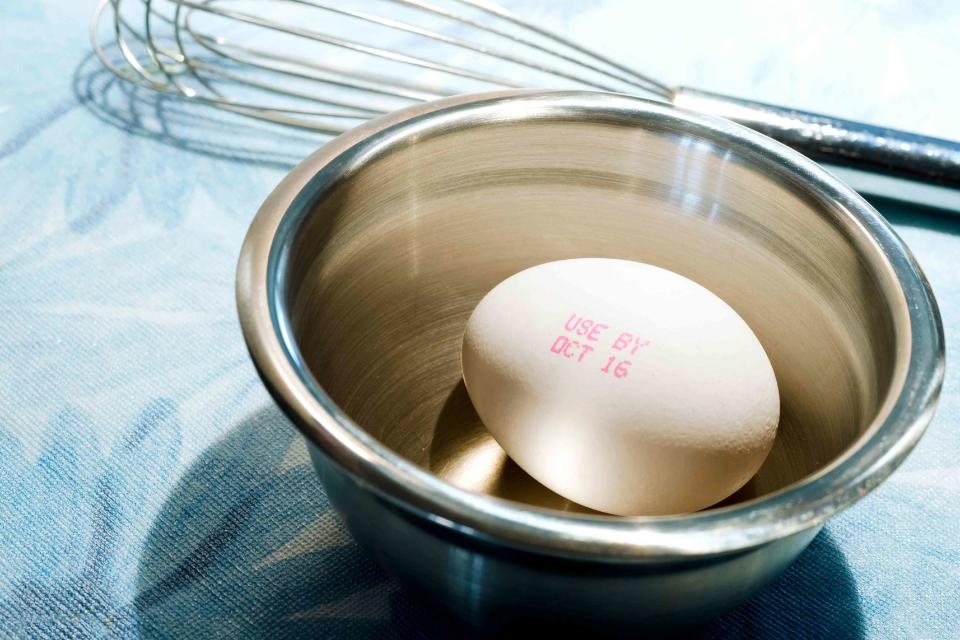What's the Difference Between 'Sell By,' 'Use By,' and 'Best By' Dates?
Here's everything to know about expiration dates — and why they often matter less than you think.

Ken Tannenbaum / Getty Images
It's the middle of the night, and you find yourself in front of the fridge. As you reach for the wedge of cheese or box of treats that lured you out of bed in the first place, you realize there's a tiny date stamped on the label. It's a "use-by" date. No, wait, it's a "sell-by" date. Or is that a "best-by" date? To add to the confusion, the date may not really matter all that much.
Related: How to Understand Food Expiration Dates
Although dating food items is not required by U.S. federal law (except for infant formula and baby food), most manufacturers do it voluntarily. According to the U.S. Department of Agriculture (USDA), "For meat, poultry, and egg products under the jurisdiction of the Food Safety and Inspection Service (FSIS), dates may be voluntarily applied provided they are labeled in a manner that is truthful and not misleading and in compliance with FSIS regulations. To comply, a calendar date must express both the month and day of the month. For shelf-stable and frozen products, the year must also be displayed. Additionally, immediately adjacent to the date must be a phrase explaining the meaning of that date, such as 'Best if Used By.'"
It's up to the grocery stores and markets to stock their shelves with the freshest items displayed behind or under the oldest products. For example, items like eggs typically hit store shelves just a few days after being laid, and cartons with the USDA grade shield are required to include a "pack date," which tells consumers when they were washed, graded, and packaged.
But that's a lot of labels — and oftentimes, food is perfectly safe to eat past its expiration date. Here's a guide to the most common expiration labels you're likely to see at the grocery store.
Use-by date
Use-by dates suggest the peak quality of a product, and are not safety dates. According to the USDA, “With the exception of infant formula, if the date passes during home storage, a product should still be safe and wholesome if handled properly until spoilage is evident. Spoiled foods will develop an off-odor, flavor, or texture due to naturally occurring spoilage bacteria. If a food has developed such spoilage characteristics, it should not be eaten.”
Best if used by date
This label is strictly a quality date, suggesting when the product will have its best taste and texture.
Sell-by date
This label indicates to stores how long a product should remain on shelves, and products are often safe to consume well after their sell-by date passes. In fact, according to the Institute for Food Safety and Health at the Illinois Institute of Technology, "one-third of a product's shelf-life remains after the sell-by date for the consumer to use at home."
Related: How to Store Dairy Products to Keep Them Good As Long As Possible
Freeze-by date
Think of this label as the "use-by" date but for freezing. Freezing most food products extends their life, and this date will tell you when to freeze an item at its highest quality.
Expires on/do-not use date
This label indicates that a product be ineffective after the date listed. Along with baby formula, baking ingredients like cake mixes, baking powder, and yeast may have this label.
When can you tell if food has gone bad?
If expiration dates don't always matter, how do you know when to toss something? Rely on your senses — if the product has an unpleasant odor or feels slimy, it may be spoiled and unsafe to consume.
It's also important to store and handle your food properly once you purchase it. For example, eggs should be refrigerated in their original carton and kept in the coldest part of the fridge (not the door). Once you open an item, its life gets a lot shorter. If you open a package of raw bacon, for instance, you have about a week to eat it before it could start spoiling, according to the FSIS.
Shelf-stable items that can be stored at room temperature, like canned goods (unless otherwise labeled), flour, and pasta, can be good for years, according to the FSIS. High-acid items like fruits and juices can be kept for 12-18 months, while low-acid items like canned vegetables or most soups are fine in your pantry for up to five years. (For a more complete list of shelf-stable items and their life span, visit the FSIS Food Safety page.)
For more Food & Wine news, make sure to sign up for our newsletter!
Read the original article on Food & Wine.

